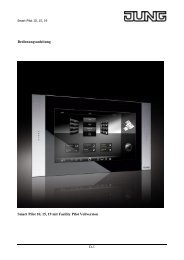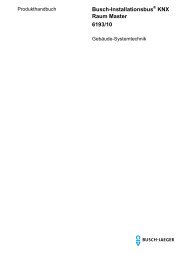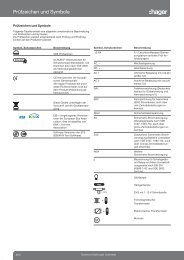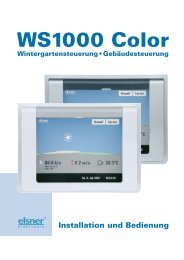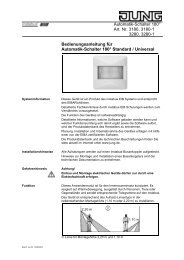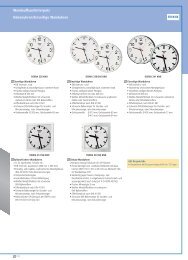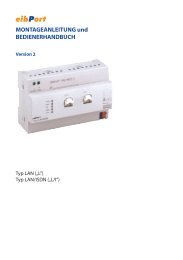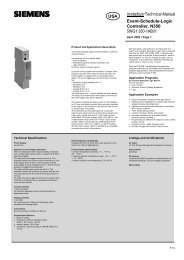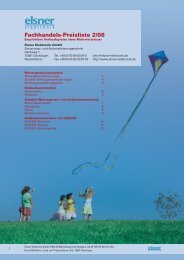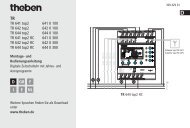Create successful ePaper yourself
Turn your PDF publications into a flip-book with our unique Google optimized e-Paper software.
i During the recording phase, changes to the time (externally by the master object or direct<br />
adjustment on the panel) should be avoided, to avoid affecting the end of the specified recording<br />
period during an automatic recording. For this reason, a simulation recording<br />
should not take place during a change from summer to winter time.<br />
Example: the recording period is specified as 1 day (24 hours). The recording is started at<br />
8:00 on the first day. If the time were to continue normally, it would be stopped automatically<br />
at 7:59 on the next day. If, during the recording phase, the time is put back by 1 hour,<br />
then the recording would run for 24 hours but, on account of the new time, would end at<br />
6:59 on the second day. Thus it may occur that telegrams between 7:00 and 7:59 are not<br />
recorded or there are time overlaps in the recorded telegram sequence.<br />
The recording can be started by tapping the "Start" button in the "Recording" display group (see<br />
picture 32). The recording takes all the incoming telegrams of all the selected functions (recording<br />
objects) into account and saves them temporarily to the RAM of the panel. During the recording,<br />
the number of incoming telegrams is displayed in the first line of the system page of the<br />
presence simulation. A maximum of 2,100 telegrams can be recorded. Should a larger amount<br />
of telegrams have been reached before the set recording time has elapsed, then the recording<br />
will stop. The telegrams received before this time can be saved and then played back later.<br />
i Due to the temporary saving of the telegram sequence, the saved data will be lost if the<br />
power supply fails or a programming operation is carried out. In this case, a new recording<br />
must be started after the device reset.<br />
Each recorded telegram is issued with a time stamp, accurate to the second. The time stamp<br />
takes the current time and weekday into account when the telegram arrives. This information is<br />
obtained from the internal real time clock of the panel. Marking with a time stamp is important<br />
on playing back (see chapter 4.2.4.11.2. Playing a telegram sequence back).<br />
The user can also stop a recording before the set recording period has elapsed. To do this, tap<br />
the "Stop" button in the "Recording" display group.<br />
At the end of the recording, the number of telegrams received and saved is displayed in the<br />
status line of the presence simulation (first line on the screen).<br />
i Each time a recording is started, the previous recording is deleted.<br />
i An active recording can be signalled to the bus using the<br />
1 bit communication object "Recording active", which can be planned in the presence simulation<br />
parameter node in the ETS plug-in.<br />
i During an active recording, it is not necessary to keep the system page of the presence<br />
simulation visible. During this time, the panel can be operated normally.<br />
Order-No. 7574 00 1X<br />
Software "...590101"<br />
Functional description<br />
Page 107 of 222




